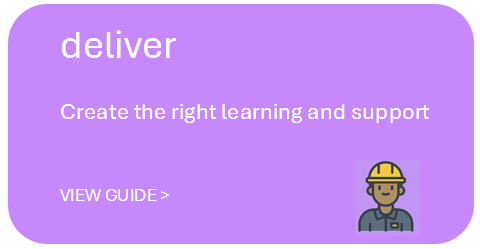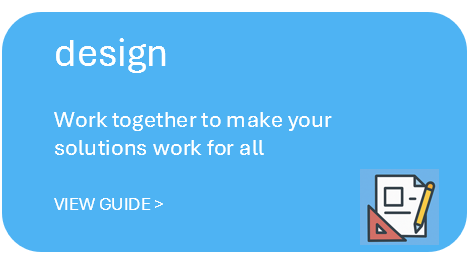Introduction
You’ve committed to working together. You’ve clarified roles and expectations. Now it’s time to ask:
Will a Degree-Level Apprenticeship actually work for the industry, role, and learners we’re trying to support?
This phase is about stress-testing the model before you build it. You need to confirm that the apprenticeship concept is well-matched to a real occupational need, a viable learner population, and an appropriate qualification.
DLAs are not a solution for every situation. Some roles don’t require a degree. Some qualifications can’t easily integrate into the workplace. Some employers may not be ready to provide structured support. Exploring these factors early helps ensure the programme you eventually design will succeed.
What this involves
The Explore phase is focused on three big questions:
Is there a defined job or occupational pathway that requires both work-based learning and a degree?
Are there learners who want and need this type of pathway—and employers who can support them?
Is there an existing qualification that fits the need, or a clear path to adapting one?
It’s a discovery process pulling together labour market insight, learner profiles, qualification analysis, and industry input to confirm whether a DLA is the right next step.
Employers
Your role: Bring visibility to the job roles and workforce challenges where a DLA could make a long-term difference.
What to explore:
Does the role require a degree? Would a degree add clear value for the individual and the organisation?
Is there a talent pipeline issue? Could a DLA help grow staff internally, or attract new talent you’re struggling to reach?
Is your business ready for degree-level apprenticeships?
Would this complement, or duplicate, how your business already upskills staff?
Key output: Clear articulation of the job role(s) that the DLA will support, and early confirmation of whether you can sustain workplace training and support for one or more apprentices.
Tools for you
Tip
If you’re unsure if your business is ready to employ an apprentice yourself, there may be other ways that you can contribute like site visits or mentoring.
Tertiary providers
Your role: Evaluate whether the qualification and your delivery model are a good match for what industry and learners need.
What to explore
Does an existing degree programme match the knowledge and skills needed in the workplace?
Can the academic programme be adapted to include work-integrated assessment, blended delivery, or RPL?
Is there interest from current or prospective learners for this kind of work-based option?
What adjustments might be needed to your delivery model to support workplace-based learners?
Key output: A shortlist of suitable qualifications, programmes and courses that could form the basis of the DLA and an early view of what changes (if any) would be required.
Tools for you
Industry Skills Boards, Professional Bodies, and Industry Associations
Your role: Help assess whether the DLA model is appropriate for the occupation and industry you represent, and whether the timing is right for broader adoption or piloting.
What to explore
Is there a defined occupation or profession where this model is a good fit?
Are there sector-wide issues that DLAs could help solve (e.g. ageing workforce, access to professional registration, low diversity)?
Do you have a way to clearly express the competencies expected of new or recent graduates?
Is there sufficient employer interest or commitment to support workplace-based learners?
Does the degree lead to, or align with, a recognised occupational or registration standard?
Key output: Sector endorsement of the concept, or a recommendation to adapt the approach, adjust timing, or explore further.
Tools for you
Model apprenticeship standards
Competency frameworks - NZIQS
[Examples from professional bodies]
Learners and Whānau
Your role: Help determine whether the DLA model meets the needs, aspirations, and circumstances of the people it is intended to serve.
What to align:
Would a work-based degree make it easier—or harder—to access learning and employment?
Are there barriers (e.g. transport, care responsibilities, digital access) that would need to be addressed for this to work?
Does the model feel culturally safe, inclusive, and meaningful?
Would this pathway help achieve long-term career and financial goals?
Key output: A tertiary provider or professional body might work with you to develop a high-level learner profile (or several) that describes the aspirations, circumstances, and potential support needs of the target DLA learner group.
Tools and Templates
You can use the following tools (available in the toolkit) to support alignment conversations:
Degree-level apprenticeships in New Zealand: building for success
Employer Readiness Quiz
Model apprenticeship standards
Competency frameworks - NZIQS
[Examples from professional bodies]
What comes next?
If your exploration confirms there is a viable role, learner group, and qualification, you’re ready to move into Design where you’ll co-create the programme structure, integrate work-based learning, and plan for delivery and support.
If gaps emerge (e.g. no suitable qualification, limited employer capacity, unclear learner need), pause or adjust. You may need to return to Align with new information—or consider alternate models.
Exploring doesn’t lock you in. It sets you up to make better decisions—with shared confidence.
The DLA toolkit
Guidelines
-

Guide for employers
An introduction to degree-level apprenticeships for employers
-

Guide for apprentices
An introduction to degree-level apprenticeships for learners
-

Guide for TEOs
An introduction to degree-level apprenticeships for tertiary education organisations











